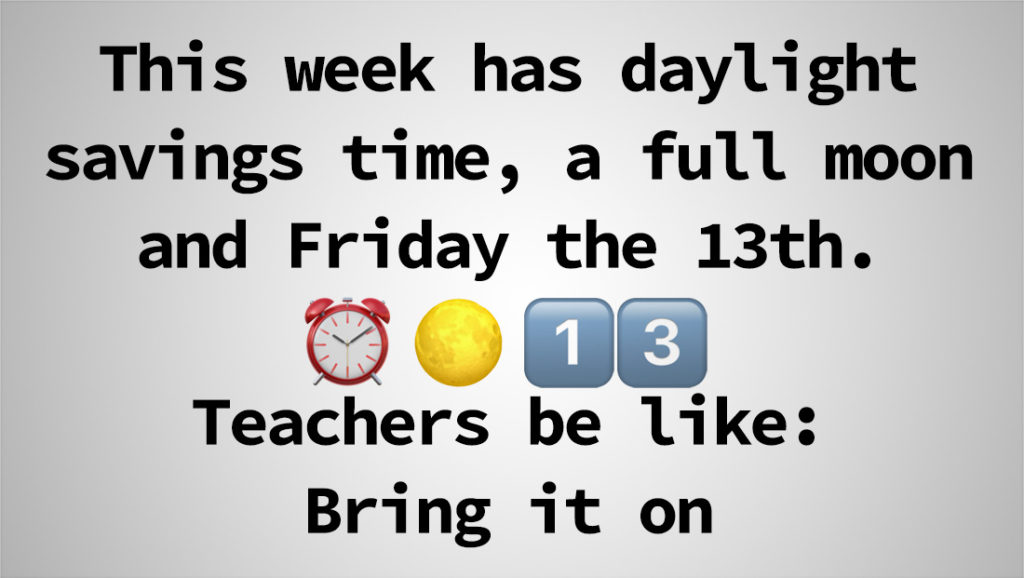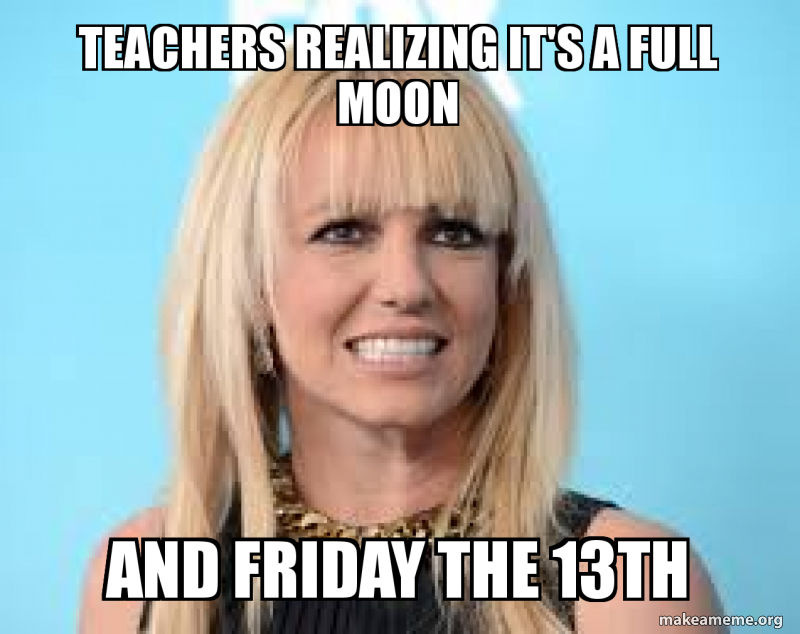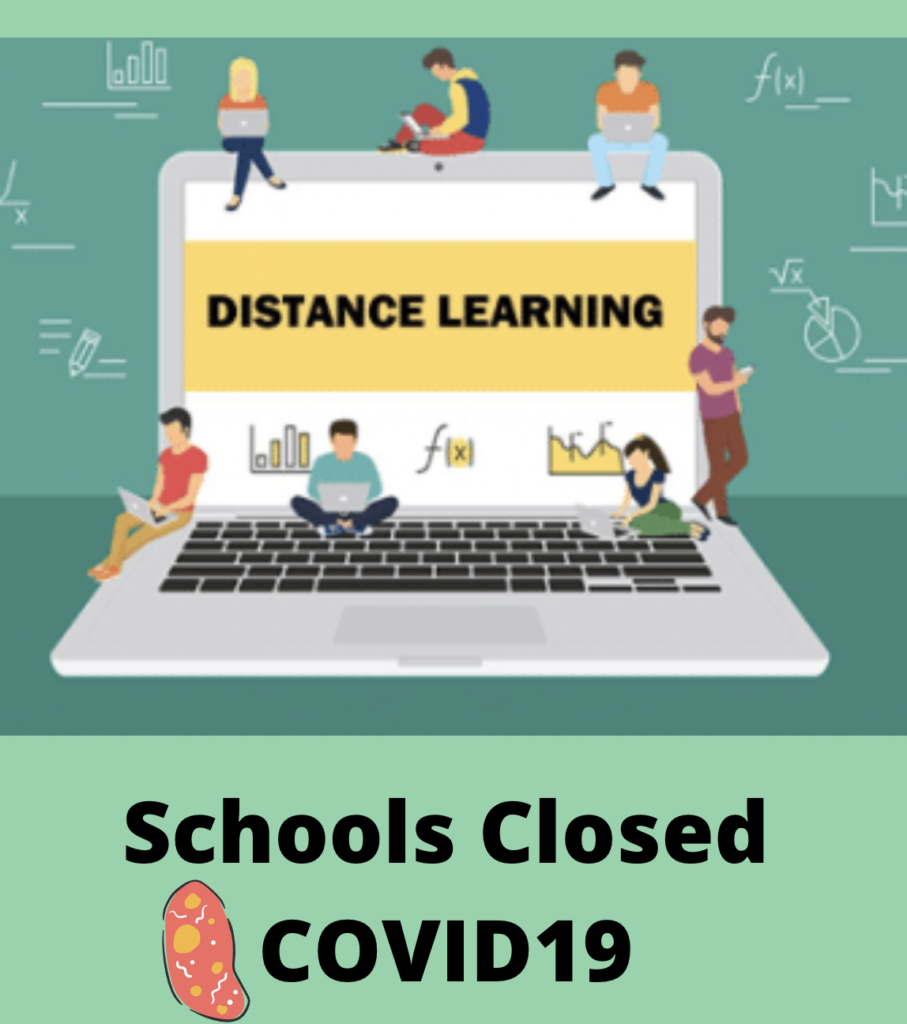
Entering into the second week of March 2020, several memes circulated the internet via Twitter, Facebook, and Instagram to name a few about this particular week having to spring forward an hour due to daylight savings time, a Friday the 13th and a full moon to end the week. The memes were quite funny, at the time. As an educator, we call this a “Just make it through the week” type of week. After one more week, we would be on Spring Break resting, relaxing or maybe evening traveling on a cruise that we have pinched our pennies for.


Prior to spring break would be the end of a grading period. This would also be the beginning of the high stakes testing season for FSA, AICE, AP, and EOCs. We have prepared all year for this final upcoming term. The aforementioned assessments are the opportunities for students to prove what they have learned. This would put teacher instruction to the test to see if students are able to retain the knowledge from the standards that were taught and assessed throughout the year. These tests are the tests to determine if students are on track for graduation. Little did we know what was yet to come.
On Friday, March 13, 2020, the Superintendent of Schools announced that students would be dismissed for an early spring break due to the spread of a new virus; COVID-19, set to return back to school Monday, March 30, 2020. Later that same evening Florida Governor Ron DeSantis held a press conference announcing the close schools until April 15 at the very earliest.
With this sudden news, we were faced with a new reality in education. What does education look like moving forward? What plan does the state have in place? Is there an emergency Instructional Continuity Plan in a vault ready to be unveiled during a pandemic or other major events that would force school closures? The answer to the latter is No. Yes, you heard it here… the answer is No.
As an administrator, my role as an instructional leader has taken on a whole new meaning. Questions spewing left and right about how to make instruction meaningful when schools are closed. Teachers are prohibited from entering the campus, only to be told they can enter the campus in small groups; no more than 10 for a maximum of 30 minutes. Administrators enter into think tank sessions to build and facilitate what learning will look like while staying in line with the newly created District Continuity plan. What is it that we are responsible for? How do we support our teachers and keep them calm while ensuring that all students are enrolled and adhere to the guidelines that we have set forth?
To launch an instant remote digital learning plan takes a team that is willing to work countless hours, collaborate with principals, and leaders at similar schools. Guess what? The plan will never be perfect and you need to be willing to accept that fact. We are assuming parents have the technology needed at home. We are assuming that only one device will be enough. We are assuming families have internet access. We are assuming that a parent will be at home to assist students. We are assuming students can advocate for themselves and will sit for their scheduled class on time and be an active participant in their learning. We are assuming that all teachers are technologically savvy to embrace this new remote digital learning world while supporting their students who may or may not have an IEP/504 plan and parents. There are a lot of assumptions being made here that simply is not the reality.
As teachers were scouring the internet for resources on how to transition, so was I. On Friday, March, 20, famed Principal Kafele led a Facebook Live for first-year administrators and their role during this pandemic. I must say, while I am not a first-year administrator, I definitely participated since this was my first experience with a pandemic. In fact, I’m not sure how many administrators can say they have experienced a pandemic in their lifetime.
Moving forward, what have I learned about this new reality of remote digital learning during this process as well as from Principal Kafele? I have learned the following:
- Be a support and a calm for teachers
- Strive to find answers and support their ideas. Believe it or not, teachers can be quite innovative during these times
- Check on their well being and their families
- Provide resources relevant to their work
- Be clear about the systems we have in place, however, be flexible. There isn’t a need to lead with an iron fist
- Identify systems in place
- Identify personnel that can be used to relieve the burden on teachers, think clerical, support staff, language facilitators, etc.
- Kids need food→ be a resource for this or provide resources
- Many kids only eat two meals a day and it’s breakfast and lunch received from the school
- Technology
- Have a plan to provide devices to families who do not have a device in a home
- Balance
- Self-care is imperative
- You can’t lead if you are worn out and overworked
- Self-care is imperative
- Consistent but meaningful communication
- Information overload will cause parents, students, and staff to tune out
- Document and save
- Save your files, notes, steps, to create a plan to reflect upon
Moving forward, when the dust settles, what are the next steps? Do we begin to integrate a pandemic plan as a part of our required yearly Emergency Crisis Response Plans? Would we have required practice “drills” for a pandemic? Do we provide ongoing professional development on remote digital learning and the resources that a school district may have in place to support?
Would our new reality resemble something similar to the University of North Carolina at Charlotte’s plan for continuing education? UNC at Charlotte has an entire department dedicated to continuing education in the event of a disruption of school due to a pandemic, natural disaster, or unsafe conditions on the campus. Information regarding UNC at Charlotte can be found here
Academic Phrases
AICE- Cambridge Advanced International Certificate of Education
AP- Advanced Placement
EOC- End of Course Exam (Geometry and Algebra)
FSA – Florida Standards Assessment
IEP- Individual Education plan504- 504 plan; temporary accommodations
References:
[This week has daylight savings time, a full moon and Friday the 13th]. (2020.). Retrieved from https://www.mixdexhq.com/education/ is-the-week-of-march-8-the-perfect-storm-for-teachers/
[Teachers realizing its]. (2020). Retrieved from https://makeameme.org/meme/teachers-realizing-its
University of North Carolina at Charlotte. (n.d.). INSTRUCTIONAL CONTINUITY PLANNING – GENERAL. Retrieved from https://teaching.uncc.edu/about-ctl/instructional-continuity-planning/general#Preparedness
